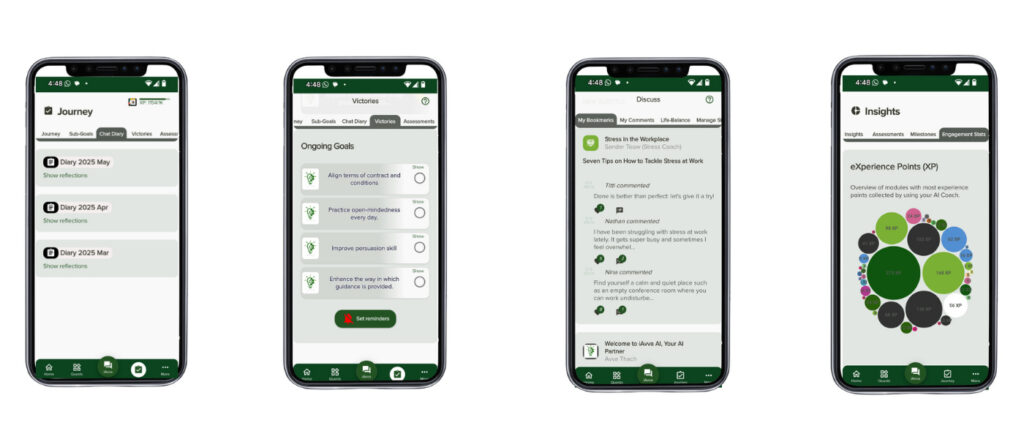Revenue Cycle Management (RCM) is a critical process in the healthcare industry that encompasses the entire lifecycle of patient revenue, from the initial appointment scheduling to the final payment collection. It involves a series of steps that healthcare providers must navigate to ensure they receive payment for their services. RCM integrates various functions, including patient registration, insurance verification, coding, billing, and collections.
Each of these components plays a vital role in maintaining the financial health of a medical practice or facility. Understanding RCM is essential for healthcare administrators and practitioners alike, as it directly impacts the organization’s cash flow and overall operational efficiency. At its core, RCM is about managing the financial aspects of patient care.
It begins with patient engagement and continues through to the point where payments are received and reconciled. The complexity of RCM arises from the multitude of regulations, payer requirements, and the diverse range of services provided in healthcare. As such, a comprehensive understanding of RCM is necessary for healthcare organizations to navigate these challenges effectively.
By mastering RCM processes, organizations can minimize errors, reduce claim denials, and ultimately enhance their revenue streams.
Key Takeaways
- Effective Revenue Cycle Management (RCM) is crucial for maximizing healthcare revenue and operational efficiency.
- Accurate coding, documentation, and timely claims submission are foundational to successful RCM.
- Leveraging technology and automation enhances the efficiency and accuracy of the revenue cycle.
- Proactive denial management, appeals, and patient financial counseling improve cash flow and reduce losses.
- Ongoing staff training and monitoring of key performance indicators drive continuous improvement in RCM processes.
The Importance of Effective RCM for Maximizing Revenue
Effective Revenue Cycle Management is paramount for maximizing revenue in healthcare settings. A well-structured RCM process ensures that healthcare providers are compensated for their services in a timely manner, which is crucial for maintaining operational stability. When RCM is executed efficiently, it leads to improved cash flow, reduced days in accounts receivable, and enhanced financial performance.
Conversely, inefficiencies in RCM can result in delayed payments, increased claim denials, and ultimately lost revenue. Moreover, effective RCM contributes to better patient experiences. When patients encounter streamlined billing processes and clear communication regarding their financial responsibilities, they are more likely to engage positively with the healthcare system.
This not only fosters trust but also encourages timely payments from patients. In an era where patient satisfaction is increasingly linked to financial outcomes, organizations that prioritize effective RCM are better positioned to thrive in a competitive healthcare landscape.
Implementing Efficient Coding and Documentation Practices

One of the cornerstones of successful Revenue Cycle Management is efficient coding and documentation practices. Accurate coding is essential for ensuring that healthcare providers receive appropriate reimbursement for the services rendered. Coding involves translating medical diagnoses and procedures into standardized codes that insurance companies use to process claims.
Errors in coding can lead to claim denials or underpayments, which can significantly impact an organization’s revenue. To implement efficient coding practices, healthcare organizations must invest in training their coding staff and ensuring they stay updated on the latest coding guidelines and regulations. Additionally, thorough documentation is crucial; it provides the necessary support for the codes submitted on claims.
By fostering a culture of meticulous documentation and coding accuracy, organizations can reduce the risk of denials and enhance their overall revenue cycle performance.
Streamlining Claims Submission and Follow-Up Processes
| Metric | Description | Before Streamlining | After Streamlining | Improvement |
|---|---|---|---|---|
| Claims Submission Time | Average time taken to submit a claim | 48 hours | 12 hours | 75% reduction |
| Claims Processing Time | Average time from submission to decision | 15 days | 7 days | 53% reduction |
| Follow-Up Frequency | Number of follow-ups required per claim | 3 | 1 | 66% reduction |
| Claim Denial Rate | Percentage of claims denied due to errors | 12% | 4% | 67% reduction |
| Staff Time Spent on Claims | Average hours per week spent managing claims | 20 hours | 8 hours | 60% reduction |
| Customer Satisfaction Score | Rating from 1 to 10 on claims experience | 6.5 | 8.7 | 34% improvement |
Streamlining claims submission and follow-up processes is another vital aspect of effective Revenue Cycle Management. The claims submission process can be fraught with challenges, including incomplete information or errors that lead to delays in payment. To mitigate these issues, organizations should adopt standardized procedures for claims submission that include thorough checks for accuracy before claims are sent to payers.
Follow-up processes are equally important; timely follow-up on submitted claims can significantly reduce the time it takes to receive payment. Establishing a systematic approach to tracking claims status and addressing any issues promptly can help organizations maintain a healthy cash flow. By prioritizing efficiency in both claims submission and follow-up processes, healthcare providers can enhance their revenue cycle performance and minimize financial losses.
Utilizing Technology and Automation for RCM Efficiency
In today’s digital age, leveraging technology and automation is essential for achieving efficiency in Revenue Cycle Management. Advanced software solutions can streamline various aspects of RCM, from patient registration to billing and collections. Automation reduces the manual workload on staff, minimizes human error, and accelerates processes that would otherwise take considerable time.
For instance, automated eligibility verification tools can quickly confirm a patient’s insurance coverage before services are rendered, reducing the likelihood of claim denials due to coverage issues. Additionally, automated billing systems can generate invoices promptly and send reminders for outstanding payments. By embracing technology and automation, healthcare organizations can enhance their operational efficiency and focus more on patient care rather than administrative tasks.
Ensuring Accurate and Timely Payment Posting

Accurate and timely payment posting is a critical component of effective Revenue Cycle Management. Once payments are received from patients or insurance companies, they must be posted correctly to ensure that accounts are reconciled accurately. Errors in payment posting can lead to discrepancies in financial records, complicating the overall revenue cycle process.
To ensure accuracy in payment posting, organizations should implement robust procedures that include regular audits of payment records. Training staff on best practices for payment posting can also help minimize errors. Furthermore, utilizing technology solutions that integrate with billing systems can facilitate real-time updates on payment statuses, allowing organizations to maintain accurate financial records and improve their overall revenue cycle management.
Strategies for Denial Management and Appeals
Denial management is an essential aspect of Revenue Cycle Management that requires strategic planning and execution. Claims denials can significantly impact an organization’s revenue; therefore, having a robust denial management strategy is crucial for minimizing financial losses. Organizations should analyze denial trends to identify common reasons for denials and develop targeted strategies to address these issues.
Implementing a systematic approach to appeals is also vital. When claims are denied, organizations must have clear procedures in place for appealing those denials effectively. This includes gathering necessary documentation, understanding payer policies, and submitting appeals within specified timeframes.
By proactively managing denials and appeals, healthcare organizations can recover lost revenue and improve their overall financial performance.
Optimizing Patient Collections and Financial Counseling
Optimizing patient collections is a critical component of Revenue Cycle Management that directly impacts an organization’s bottom line. As patients increasingly bear a larger share of healthcare costs through high-deductible plans and out-of-pocket expenses, effective patient collections strategies are essential. Organizations must adopt transparent billing practices that clearly communicate patients’ financial responsibilities upfront.
Providing patients with access to financial counselors who can explain their bills, discuss payment options, and assist with financial assistance programs can enhance patient satisfaction while improving collection rates. By prioritizing patient collections and offering financial counseling services, healthcare organizations can foster positive relationships with patients while ensuring they receive timely payments for services rendered.
Training and Education for Staff on RCM Best Practices
Training and education for staff on Revenue Cycle Management best practices are fundamental to achieving success in this area. Healthcare organizations must invest in ongoing training programs that equip staff with the knowledge and skills necessary to navigate the complexities of RCM effectively. This includes training on coding updates, billing procedures, compliance regulations, and customer service skills.
Moreover, fostering a culture of continuous learning within the organization encourages staff to stay informed about industry changes and best practices. Regular workshops or seminars can provide opportunities for staff to share insights and learn from one another’s experiences. By prioritizing training and education, organizations can empower their teams to contribute positively to the revenue cycle process.
Monitoring Key Performance Indicators (KPIs) for RCM Success
Monitoring key performance indicators (KPIs) is essential for assessing the effectiveness of Revenue Cycle Management efforts. KPIs provide valuable insights into various aspects of the revenue cycle process, such as days in accounts receivable, claim denial rates, and collection rates. By regularly tracking these metrics, organizations can identify areas for improvement and make data-driven decisions to enhance their RCM strategies.
Establishing benchmarks for KPIs allows organizations to measure their performance against industry standards or internal goals. This not only helps identify trends but also fosters accountability among staff members responsible for different aspects of the revenue cycle process. By focusing on KPIs as part of their RCM strategy, healthcare organizations can drive continuous improvement and achieve greater financial success.
Continuous Improvement and Adaptation in RCM Strategies
Continuous improvement and adaptation are vital components of effective Revenue Cycle Management strategies. The healthcare landscape is constantly evolving due to changes in regulations, payer requirements, and patient expectations; therefore, organizations must remain agile in their approach to RCM. Regularly reviewing processes and seeking feedback from staff can help identify areas where improvements can be made.
Additionally, staying informed about industry trends and emerging technologies allows organizations to adapt their RCM strategies accordingly. Embracing a mindset of continuous improvement fosters innovation within the organization and positions it for long-term success in managing its revenue cycle effectively. By committing to ongoing evaluation and adaptation of RCM strategies, healthcare providers can ensure they remain competitive while maximizing their revenue potential.
Revenue cycle management is a critical aspect of medical billing that ensures healthcare providers are reimbursed for their services efficiently. For those looking to enhance their understanding of how technology can streamline this process, a related article titled “Embracing AI: Transforming Your Coaching Practice” provides valuable insights. You can read it [here](https://iavva.ai/2025/09/01/embracing-ai-transforming-your-coaching-practice-2/). This article discusses the integration of artificial intelligence in various business practices, which can be beneficial for optimizing revenue cycle management in the healthcare sector.
FAQs
What is revenue cycle management in medical billing?
Revenue cycle management (RCM) in medical billing refers to the process healthcare providers use to track patient care episodes from registration and appointment scheduling to the final payment of a balance. It involves managing claims, payments, and revenue generation to ensure financial efficiency.
Why is revenue cycle management important in healthcare?
RCM is crucial because it helps healthcare providers optimize their financial performance by reducing claim denials, accelerating payment cycles, and improving cash flow. Effective RCM ensures that providers are reimbursed accurately and promptly for the services they deliver.
What are the key steps involved in revenue cycle management?
The key steps include patient registration, insurance verification, charge capture, claim submission, payment posting, denial management, and patient billing. Each step is essential to ensure accurate billing and timely reimbursement.
Who is responsible for revenue cycle management?
Typically, revenue cycle management is handled by a dedicated billing department within a healthcare organization or outsourced to specialized RCM service providers. It involves collaboration between administrative staff, billing specialists, and healthcare providers.
How does technology impact revenue cycle management?
Technology plays a significant role by automating many RCM processes such as electronic health records (EHR), claims processing, and payment tracking. This reduces errors, speeds up billing cycles, and improves overall efficiency.
What challenges are commonly faced in revenue cycle management?
Common challenges include claim denials, coding errors, insurance verification issues, delayed payments, and regulatory compliance. Addressing these challenges requires continuous monitoring and process improvement.
Can revenue cycle management improve patient satisfaction?
Yes, effective RCM can improve patient satisfaction by providing clear billing information, reducing billing errors, and offering flexible payment options, which helps patients understand and manage their healthcare expenses better.
What is the difference between medical billing and revenue cycle management?
Medical billing is a component of revenue cycle management focused specifically on submitting and following up on claims with health insurance companies. RCM encompasses the entire financial process from patient intake to final payment collection.
How do healthcare providers measure the success of their revenue cycle management?
Success is measured using key performance indicators (KPIs) such as days in accounts receivable, claim denial rates, clean claim rates, and net collection rates. These metrics help providers assess the efficiency and effectiveness of their RCM processes.
Is revenue cycle management regulated?
Yes, RCM must comply with healthcare regulations such as HIPAA in the United States, which governs patient privacy and data security, as well as billing and coding standards set by organizations like CMS and the AMA.





















Leave a Reply